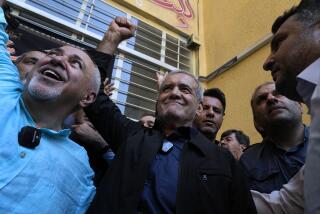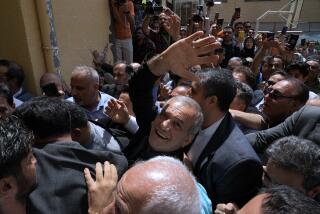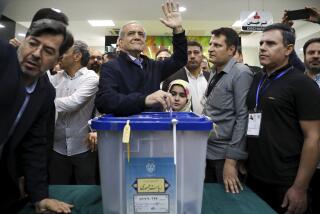A Door Cracks Open in Iran
- Share via
Mohammad Khatami was elected Iran’s president last May with the solid backing of women and younger people--all Iranians over the age of 15 may vote--who have been among those suffering most from the restrictions and repressions imposed by the 1979 revolution. A moderate, Khatami was seen as embodying broad-based hopes for progressive change. His actions and comments since he took office Aug. 3 have been encouraging.
For starters, he has picked a Cabinet dominated by pragmatists and centrists, including those he wants to head the ministries of Foreign Affairs, Intelligence, Cultural and Islamic Guidance, and Interior, which among other things controls internal security.
As a first order of business Khatami says he will move to strengthen Iran’s economy. That would presumably include re-privatizing a good part of the 70% of industry now in government hands.
In a recent interview, the president endorsed the introduction of formal political parties, which have been banned since the theocratic regime took power. And he has called for “an independent free press,” as a means “to convey peoples’ needs to the state.” This is a program for liberalizing Iranian life that a populace weary of the austere and joyless rule of the mullahs will surely welcome.
If, that is, Khatami can push it through.
His 22 Cabinet choices must be approved by the 270-seat Parliament, which is dominated by Islamic conservatives who are likely to resist any dilution of their power or claimed moral authority. Against their expected opposition, Khatami brings the mandate of a landslide victory and the reality of a restive people. U.S. experts on Iran are impressed by the direction the new president has taken so far. As always, the real test will be what he is able to do. For now at least, the opportunity for a positive shift in Iranian policies seems greater than at any time in the last 18 years.
More to Read
Sign up for Essential California
The most important California stories and recommendations in your inbox every morning.
You may occasionally receive promotional content from the Los Angeles Times.













